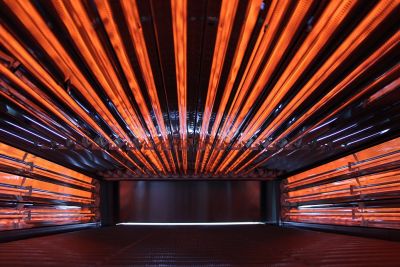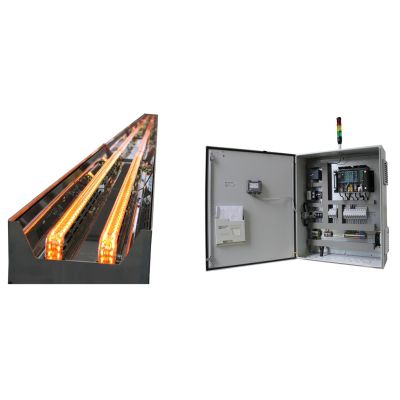Plastic welding: A principle of the material-locking connection of plastics
The joining of thermoplastics by applying heat without using an additional adhesive medium is called plastic welding. In this process, two plastic components are heated until they soften. This causes the thermoplastics to fuse, and after cooling this leads to a permanent bond. Plastic welding can be carried out using various methods. Infrared welding (hot plate welding) is a process in which melting takes place through infrared radiation, which is absorbed by the plastic and converted into heat. This melts a thin layer on the surface of the plastics, which are then permanently welded by pressing them together.
Infrared radiation as a heat source for welding plastics - Heating element welding
Infrared heaters are very well suited for heating element welding of plastics, as they have a high power density as well as targeted controllability. This ensures a systematic heating process. The non-contact temperature measurement by means of a pyrometer and the control of the emitter power according to the set temperature ensure an optimised process sequence. Due to the direct and directed heat input during infrared welding, the infrared radiation has a targeted effect where it is needed. The type of infrared emitter used for plastic welding depends on the absorption behaviour of the plastics used. The shorter the wavelength, the deeper the radiation can penetrate the plastics.
What has to be considered when welding plastics?
The selection of the appropriate system for welding plastics depends on the requirements of the application, the materials involved and the desired process parameters. By matching the emission of the infrared emitters to the absorption of the IR-active functional groups of the plastics used, the heating process can be optimally designed, thereby significantly reducing the time and energy required for infrared welding.
The advantages of infrared welding of plastics at a glance
- high heat flux densities, rapid heating
- contactless and direct heat transfer
- Emission of the emitters matched to the absorption of the plastics
- Flexible use: heating of larger joining surfaces as well as smaller areas and complex parts possible
- Low energy loss
- High efficiency
- Targeted and reproducible heating
- Particle-free process
- Simple and safe operation due to defined temperature control
Ingolf Jaeger
Head of Sales
Dipl.-Ing. Mechanical Engineering
E-Mail: i.jaeger@ibt.de
Phone.: +49 (0) 3731 1683-15


